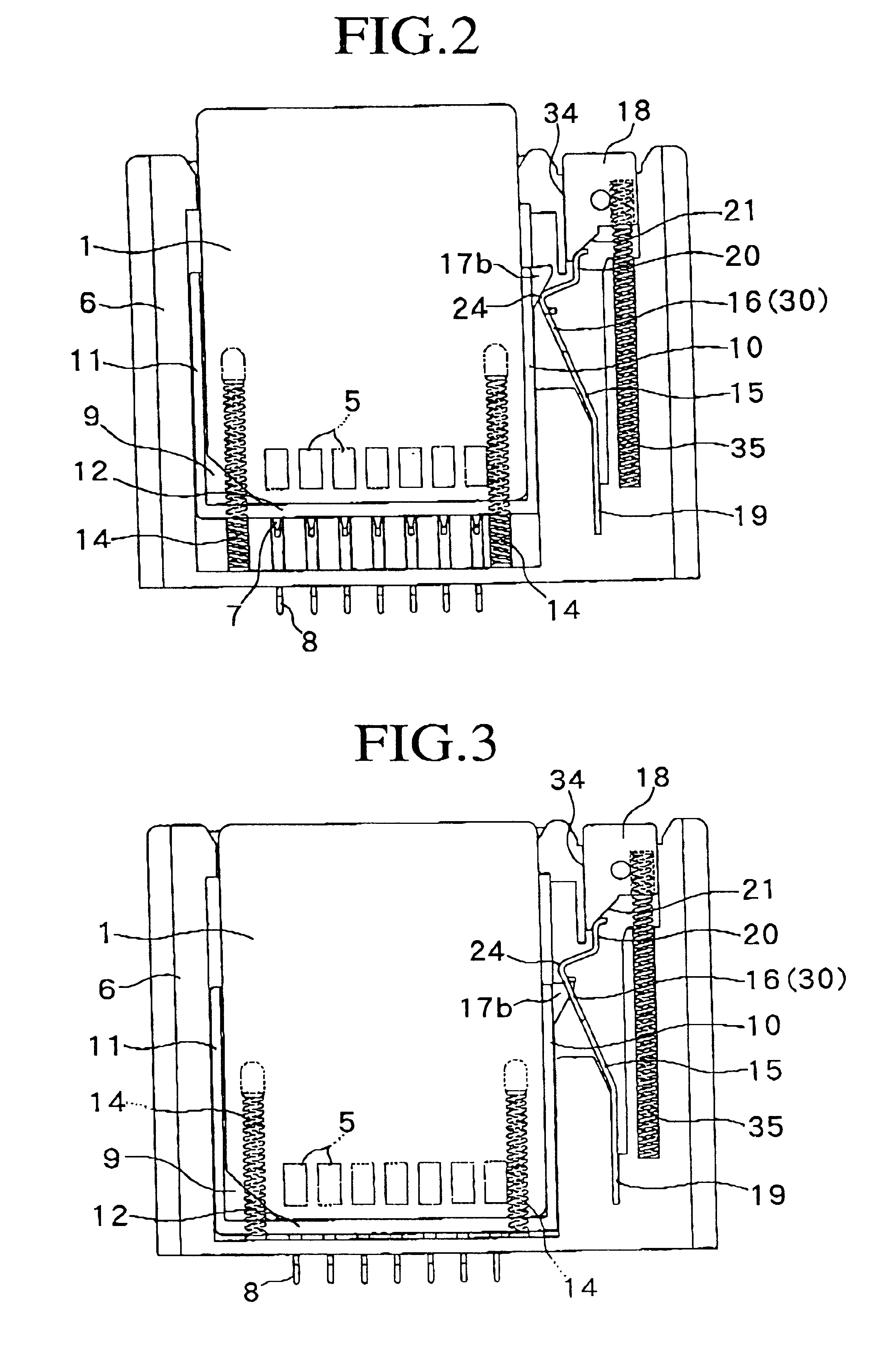Lock and lock releasing mechanism in IC card connecting mechanism
a technology of ic card and ejector, which is applied in the direction of coupling device connection, coupling/disengagement part engagement, instruments, etc., can solve the problems of overly large ejector force of the card ejector, overly large load on the ic card, and even increased inconvenien
- Summary
- Abstract
- Description
- Claims
- Application Information
AI Technical Summary
Problems solved by technology
Method used
Image
Examples
Embodiment Construction
FIGS. 1 to 9 exemplify a lock and lock releasing mechanism according to one embodiment of the present invention, in which a lock arm 15 is brought into engagement with and disengagement from a card ejecting member, while FIGS. 10 to 16 exemplify another type of a lock and lock releasing mechanism, in which a lock arm 15 is brought into engagement with and disengagement from an IC card 1.
The IC card 1 is of the type having an IC chip, which is inserted into a given electronic device such as, for example, a personal computer, in order to record thereon information from the electronic device or to input information, which the IC card 1 possesses, on the electronic device. The IC card 1 includes one which contains therein a CPU.
The IC card 1 is provided with external contacts 5 which, when the IC card 1 is inserted into a card receiving space 3 through a card inlet port 2, are pressure contacted with contacts 4 arranged within the card receiving space 3.
The contacts 4 are implanted in a...
PUM
 Login to View More
Login to View More Abstract
Description
Claims
Application Information
 Login to View More
Login to View More - R&D
- Intellectual Property
- Life Sciences
- Materials
- Tech Scout
- Unparalleled Data Quality
- Higher Quality Content
- 60% Fewer Hallucinations
Browse by: Latest US Patents, China's latest patents, Technical Efficacy Thesaurus, Application Domain, Technology Topic, Popular Technical Reports.
© 2025 PatSnap. All rights reserved.Legal|Privacy policy|Modern Slavery Act Transparency Statement|Sitemap|About US| Contact US: help@patsnap.com



